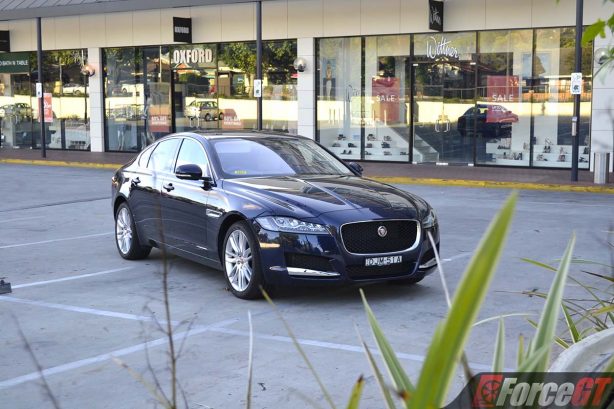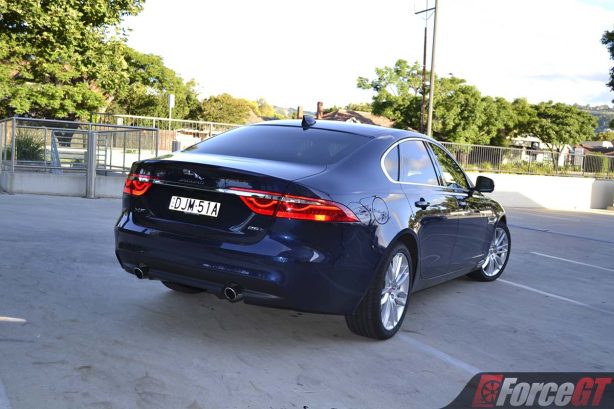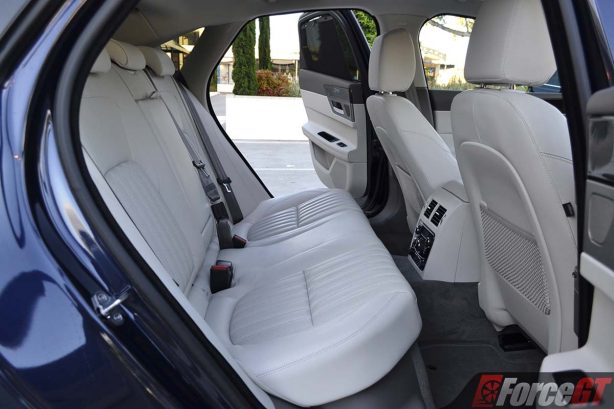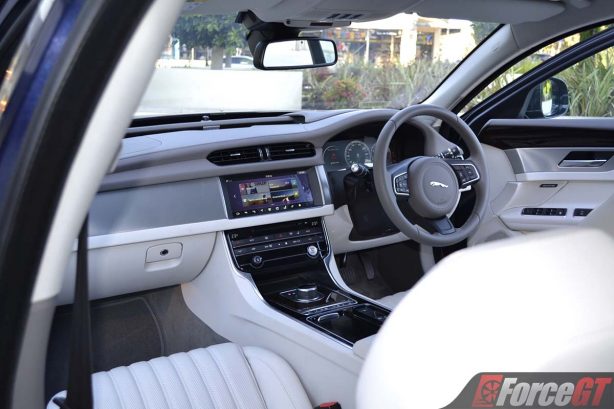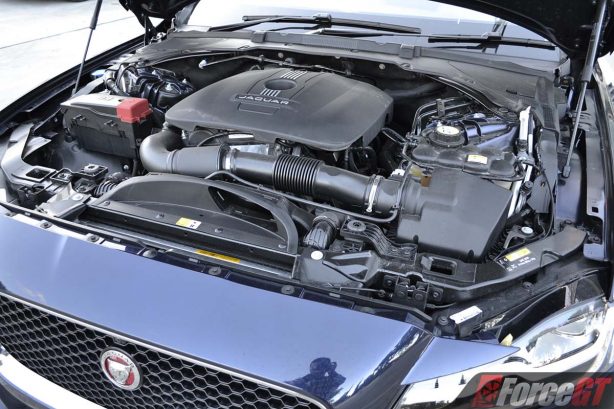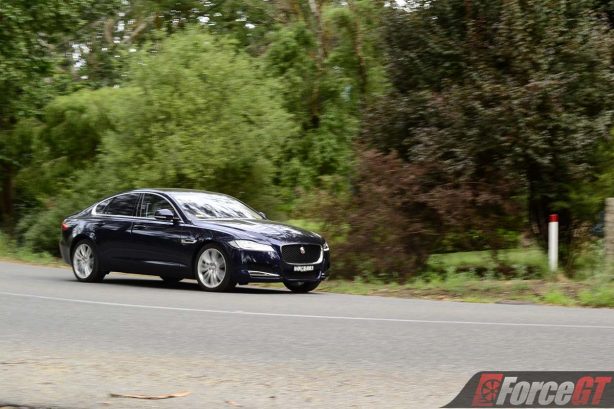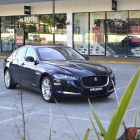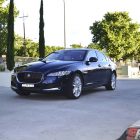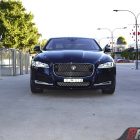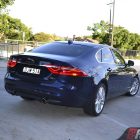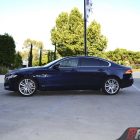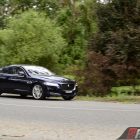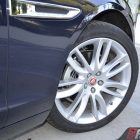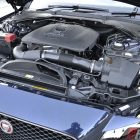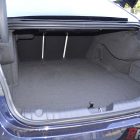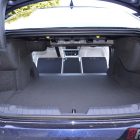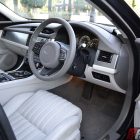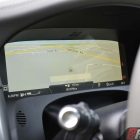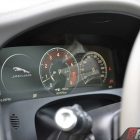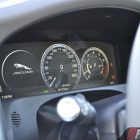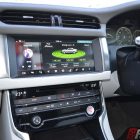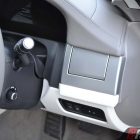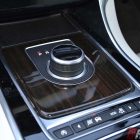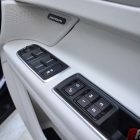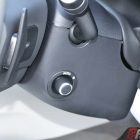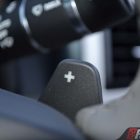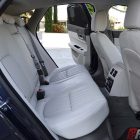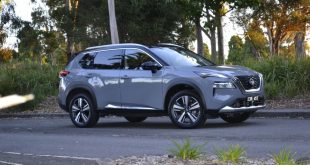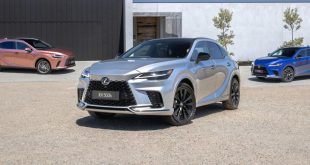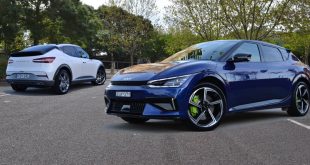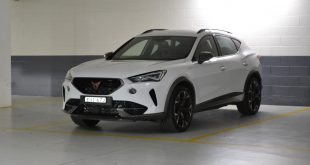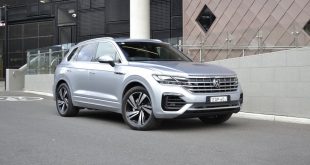The Jaguar XF is arguably one of the most important models in the company’s passenger car portfolio as it was the XF that revitalised the struggling brand from oblivion in 2007, after years of producing ho-hum products under Ford’s ownership.
It was the trailblazer model that shaked off Jaguars ‘old fashion’ image and dragged it into the 21st century, pioneering the way for its re-energized lineup that we have today.
There was much to be liked about the first-generation XF. Its styling for a start was nothing we have seen before from Jaguar; stylishly modern and importantly, it steered like a proper Jaguar should.
Launched early last year and now into its second-generation, the new XF has undergone an evolutionary refresh that sees Jaguar refining the recipe that made it such a success when it was first introduced.
While the smart exterior that made a seismic impact back in 2007 returns – albeit with sharper lines, a more powerful stance and F-Type-inspired taillight graphics – it’s what’s underneath the new XF that Jaguar has spent most of its money on.
The previous Ford-derived steel chassis has been swapped with a brand new Jaguar developed, aluminium-intensive chassis that is lighter and leaner, yet bigger. For its MY17 update, the XF has also gain a new generation of Ingenium four-cylinder engines – a first for the model.
On test here is the 2017 XF Portfolio 25t running the new 2.0-litre turbocharged four-cylinder Ingenium petrol. It delivers 177kW of power and 340Nm of torque to the rear wheels via a ZF 8-speed automatic transmission.
Priced from $97,515 plus on-roads, the 25t is the entry-level petrol model in the XF’s eight-strong model line up. Our test car is also equipped with a raft of options (see table below) that inflate the price up to $118,035.
While the modern styling that won universal appeal when it first arrived is largely retained, the new chassis means Jaguar is able to liberate more interior space (a major gripe on the original XF) despite measuring 7mm shorter overall than before.
The front seats are large and comfortable although the centre armrest is hard and thinly padded. There is now more rear seat leg and headroom and access is also much better than before. Like most rear drivers, the centre seat is only good for short distances as the large transmission tunnel means your knees are in close proximity with your chest.
At the back, there is a decent-sized boot that is expandable by folding the rear seats flat to create more than 2m of load length.
The XF’s dashboard however, is a text book example of British conservatism compared to the latest offerings from Germany and Japan, but surprise and delight features such as the rotating air-conditioning vents, pop up gear canister, interior mood lighting and optional 12.3-inch digital instruments bring a welcome infusion of modernism into the cabin.
While fit and finish are generally good, the XF’s plastics aren’t uniformly impressive, although they still feel suitably upmarket.
The MY17 update also brings Jaguar’s latest InControl infotainment system into the cabin, complete with an 8” widescreen touchscreen. Our test car is equipped with the larger optional 10.2-inch InControl Touch Pro which removes physical shortcut buttons entirely and comes with a more powerful quad-core processor. The menu system is intuitive and the graphics are crisp although still lack behind that of BMW and Audi’s class leading infotainment systems.
With a perfect 50/50 weight distribution and aluminium underpinnings, the XF is comparatively light against its rivals, which gives it an edge in the way it rides and handles.
It feels composed and agile in corners, thanks in part to the optional sports suspension that strikes a fine balance between handling and comfort. Vertical body movement is well controlled and the occasional tail wag when exiting a corner means there is never a dull moment in the XF. Its steering is delightfully fast, meaty and accurate, with plenty of feedback to easily point the XF’s nose almost precisely where you want it to be. It also turns in and grip with alacrity.
All this on a base model!
The 2.0-litre turbocharged petrol is eager and pulls strongly. The 0 to 100km/h sprint is rated at 7.0 seconds flat although it doesn’t feel that fast, thanks to relatively its relatively well insulated cabin.
The engine also sounds sportier the more revs you pile on, making a drive around twisty back roads a rewarding indulgent.
Sadly, the XF’s impressive handling and powertrain is let down slightly by its 8-speed automatic.
It is slow to kick down and usually needs to be coerced into dropping gears. This is especially so in Normal mode. Sport mode alleviates the issue slightly but its response isn’t quite as alert as we’d like it to be. The software tends to select one gear higher than preferred in corners, requiring a further prod of the accelerator. It is less of a complaint for around town driving but on a piece of twisty tarmac, this unsettles the car and makes smooth corner exit a challenge in full auto mode. Thankfully, the XF is equipped with flappy paddles that allow you to take more control over the gear changes.
Away from the B-roads, the XF’s suspension is well oiled and deftly manages road intrusions, cocooning the cabin with suitably comfortable ride as you’d expect from a Jag.
Jaguar claims the XF will return an average combined fuel consumption of 7.5L/100km, while its urban consumption figure is rated at 10.5L/100km. On test, our XF returned 12.6L/100km of mainly urban driving, with plenty of seat time around our regular twisty test routes.
Equipment levels are generous in the XF, with the 25t receiving 19-inch Razor 7 Twin Spoke Sparkle Silver Wheels, Torque Vectoring by Braking, Tyre Pressure Monitoring System, powered bootlid, infrared reflective front windscreen, LED headlights, keyless entry and reverse camera amongst others.
Verdict
Design and Comfort: 8.0/10
Performance and Handling: 8.0/10
Economy: 7.5/10
Quality: 8.0/10
Features and Equipment: 8.0/10
The 2017 Jaguar XF is a worthy alternative to the Teutonic heavy weights.
Its impressive steering, ride quality and feel some balance all wrapped around a stylish body that stands out from the crowd.
Sadly, its shiny armour is blemished by its 8-speed automatic that needs polishing and sharpening up.
Pros:
- Impressive ride and handling balance
- Eager and sweet sounding engine
- Roomier interior
Cons:
- Transmission calibration needs polishing
- Some low rent interior plastics
- Conservative interior design
2017 Jaguar XF pricing and specification
| Pricing (Excluding on-road costs): | From $82,755 XF Portfolio 25t from $97,515 As tested: $118,035* *Tested options: · Rear comfort pack (heated front and rear seats, 4-zone climate control, electric rear window sunblind) – $4,210 · Electric tilt/slide sunroof – $3,300 · InControl Touch Pro SSD Nav Pack (InControl Touch Pro 10.2” Touch-screen, 12.3” HD Virtual Instrument Display, SSD Navigation Tuner and Meridian Digital Sound System (380W), DAB+ Radio, Head-up Display – $2,630 · Digital TV Tuner – $2,160 · Dark Sapphire Metallic Paint – $2,060 · Soft Door Close – $1,340 · Air Quality Sensor & Cooled Glove Box – $1,030 · Privacy glass – $930 · 14-way electric front luxury seats – $820 · Driver and Passenger seat memory – $640 · InControl Apps – $590 · Sport Suspension – $500 · Premium carpet mats – $310 |
| Warranty: | 3 years/unlimited kilometres |
| Warranty Customer Assistance: | 3 year roadside |
| Country of Origin: | U.K. |
| Service Intervals: | 12 months/16,000km |
| Engine: | 2.0-litre in-line 4-cylinder turbo-diesel: 132kW @ 4,000rpm, 430Nm @ 1,750-2,500rpm 3.0-litre twin-turbo diesel V6: 221kW @ 4,000rpm, 700Nm @ 2,000rpm 2.0-litre in-line 4-cylinder turbocharged petrol: 177kW @ 5,500rpm, 340Nm @ 1,750-4,000rpm 3.0-litre supercharged V6 petrol: 250kW @ 6,500rpm, 450Nm @ 4,500rpm 3.0-litre supercharged V6 petrol: 280kW @ 6,500rpm, 450Nm @ 4,500rpm |
| Transmission: | 8-speed automatic |
| Drivetrain: | Rear-wheel drive |
| Power-to-weight Ratio (W/kg): | 20d: 84.8 30d: 129.1 25t: 114.7 35t: 168.5 |
| Combined Fuel Consumption (L/100km): | 20d: Claimed: 4.3 30d: Claimed: 5.5 25t: Claimed: 7.5 / Tested: 12.6 35t: Claimed: 8.3 |
| RON Rating: | 95 |
| Fuel Capacity (L): | 66 – 74 |
| Safety: | 5-star ANCAP, 6 airbags, ABS, BA, EBD, ESC, Lane Departure Warning, Autonomous Emergency Braking (AEB), Torque Vectoring by Braking, LED headlights with LED daytime running lights, adaptive lighting, turning light and automatic high beam assist, reverse camera, front and rear parking sensors, ISOFIX |
| Dimensions (L/W/H/W-B) mm: | 4,954/1,987/1,457/2,960 |
| Kerb Weight (kg): | 1,595 – 1,750 |
| Towing Capacity (kg): | N/A |
| Entertainment: | 8-inch InControl touch SD Navigation, AM/FM, Bluetooth, USB, AUX, iPod |
Competitors: Audi A6, BMW 5 Series, Lexus GS, Infiniti Q70, Mercedes-Benz E-Class, Volvo S90
 ForceGT.com Car News, Car Reviews, Video Reviews, Tuning and much more.
ForceGT.com Car News, Car Reviews, Video Reviews, Tuning and much more. 